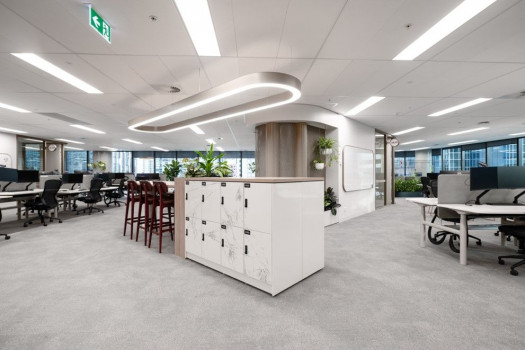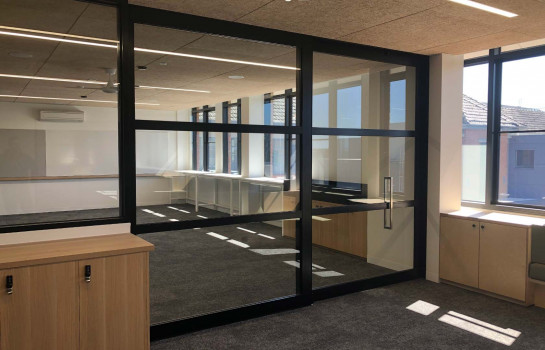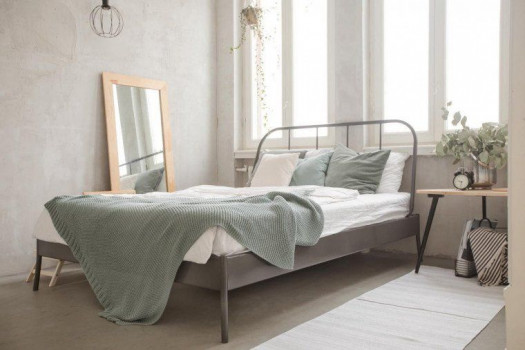Taking a look at the ‘House Of The Future’ four years on




While perception of time is fundamental to human awareness, it’s not exactly something that we share collectively. Time perception varies with every individual, creating a ‘jungle’ of different interpretations of temporal events. This illusion of unity arises from perceived environmental symbols and our own identity, allowing individuals to ground themselves temporally through self-reference. The Futurist movement rejects temporal based symbols like ‘traditional’ and ‘modern’ styles. The first Futurist architect Antonio Sant’Elia rejected all notions and blends of tradition and modernism, describing the current trend of ‘modern’ architecture in 1914 as “a moronic mixture of the most various stylistic elements used to mask the skeletons of modern houses”. He argues that modern construction materials and scientific thinking is incompatible with traditional architecture. His response to the “synthetic art” of modern architecture was the “Futurist house and city”.
The Futurist house unashamedly utilizes the latest in science and technology, never hidden away behind a façade or plaster and standing tall in its mechanical glory. Decorations are stripped away, as the beauty of a futurist house is its function and simplicity. The Futurist city is a machine, and the house a cog. Several of these principles of Futurist architecture are present in this concept of ‘The House Of The Future’, envisioned by NSSTUDIO Architects for Sydney’s Property Buyer Expo in 2017, although many break Sant’Elia’s rules.
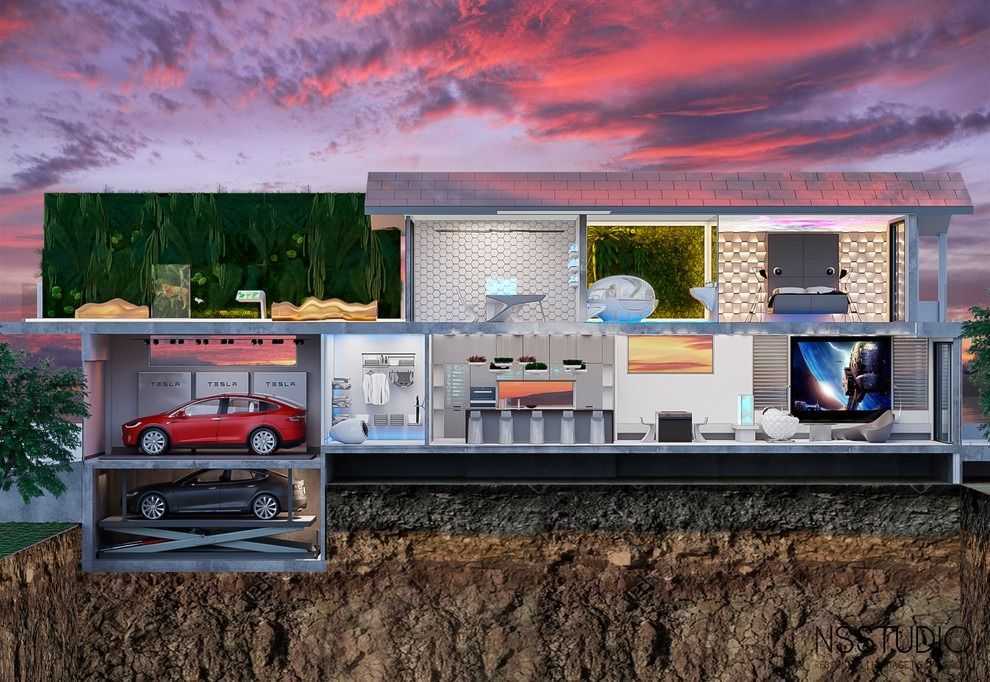
NSSTUDIO Architect’s House Of The Future.
The brief was to come up with a concept for a dwelling in 2040 and beyond. Drawing on current and developing technologies, NSSTUDIO made several forecasts of what would change and what would remain relatively unchanged. The design has strong emphasis on both technology and sustainability, taking into account the decreasing size of living areas by making use of space. In the kitchen, the counters and stovetops are seamless, and able to evenly heat objects regardless of their placement. This technology is currently available already, although it may take a while for them to become commonplace, it is quite reasonable that in 2040 many houses will have access to this technology. The smart induction stovetop has many additional functions, taking the place of other kitchen tools such as scales and measuring cups. Meanwhile, the fridge shows quantities of food in the fridge, reducing the need to open. Looking at the oven, the designers do not predict much innovation in that area. All of this is integrated into a centralised AI control unit, in charge of not only regulating temperatures, power usage, lighting, and other utilities, but the occupants health, nutrition and sleep cycles.
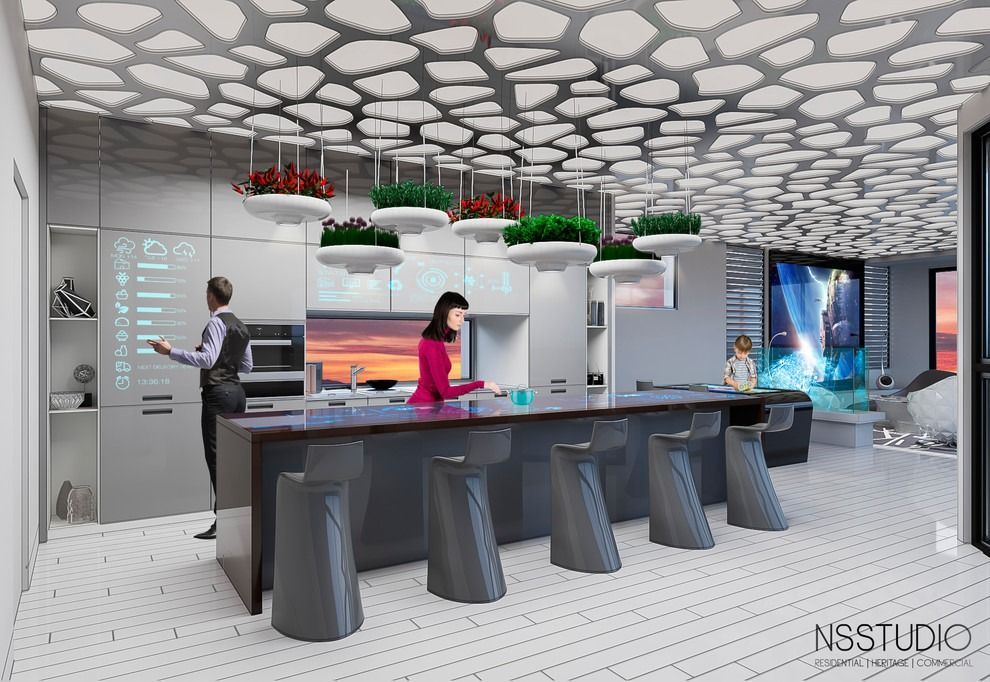
The kitchen layout remains relatively unchanged, with a central island/bar and the appliances against the back wall. In the House Of The Future, the kitchen island is also the stove.
The living room is even more ambitious than the kitchen. The television now extends almost the entire height of the wall, flanked on either side by speakers on antennae like stalks over subwoofers. Complete with holographic dog, this living room could be straight out of The Jetsons. And of course, what would people be watching in the future if not Sci Fi? Moving to the garage we encounter the bastions of futurist tech: Tesla batteries. The ability to capture and harness renewable energy efficiently and cheaply is a tantalisingly close reality thanks to the Jerry Garcia of tech billionaires, Elon Musk. Who could forget his overnight solution to South Australia’s summer blackouts, endemic to the region, which originated from a bet? Today, one of these bad boys will set you back at least $16,000, but promise eventual returns on investment. For the keen drivers, the walls of the garage display up to date weather and traffic information. Although one could predict that this would be unnecessary with the rise of autonomous vehicles, we are still a far way off from completely driverless cars.
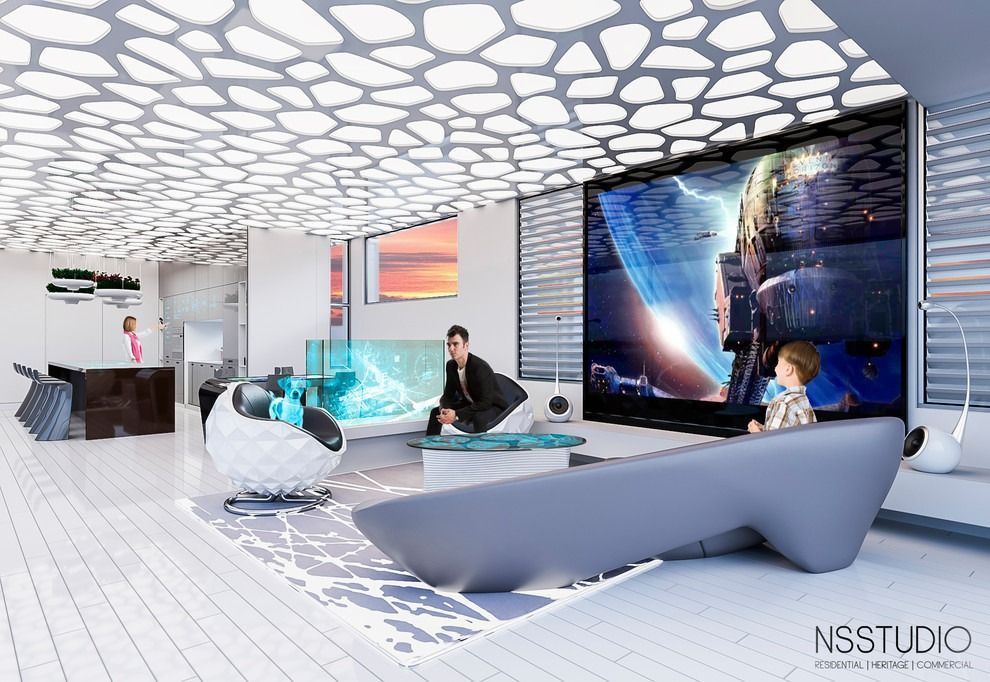
Meet George Jetson, his son Elroy.

The steering wheel and GPS wall forecasts that completely driverless cars won’t have arrived just yet.
The study looks like a scene out of Star Wars. Although realistic holographic projection is highly unlikely and increasingly unnecessary in the near future (Why is everyone always blue, anyway?), the uses of holographic technology isn’t. Holographic technology is already being utilised to take accurate measurements of three dimensional objects and to record large amounts of data. This is referenced through the 3D image of a turbine and the holographic books (it’s a metaphor for data okay, you’re not actually flipping through holographic books).
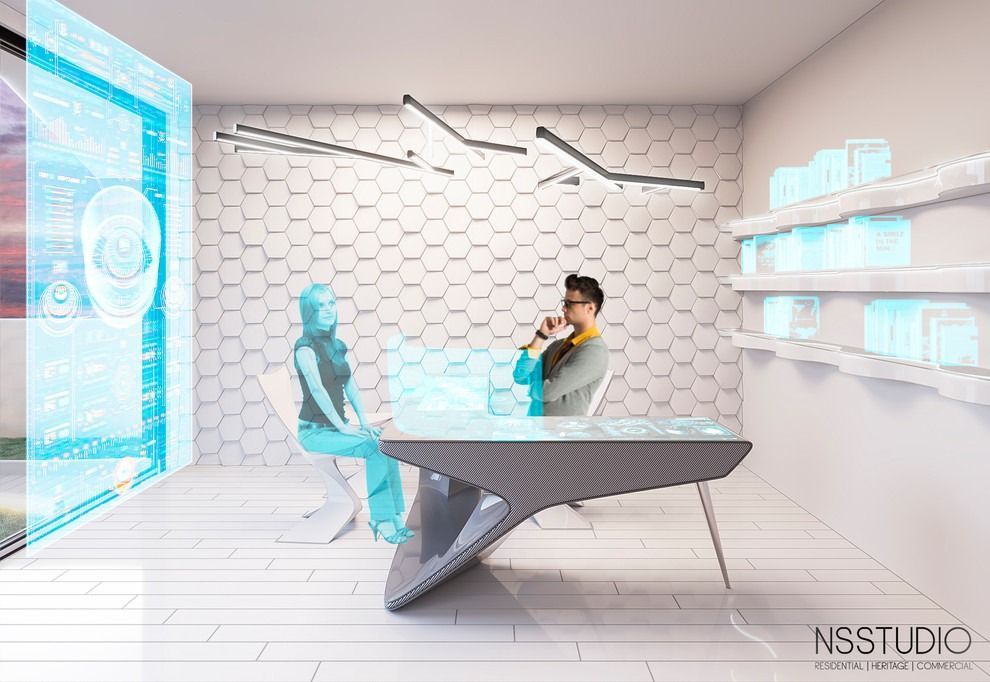
Holographic technology is being used to record data and graph 3D objects, as represented by the screen and holographic books.
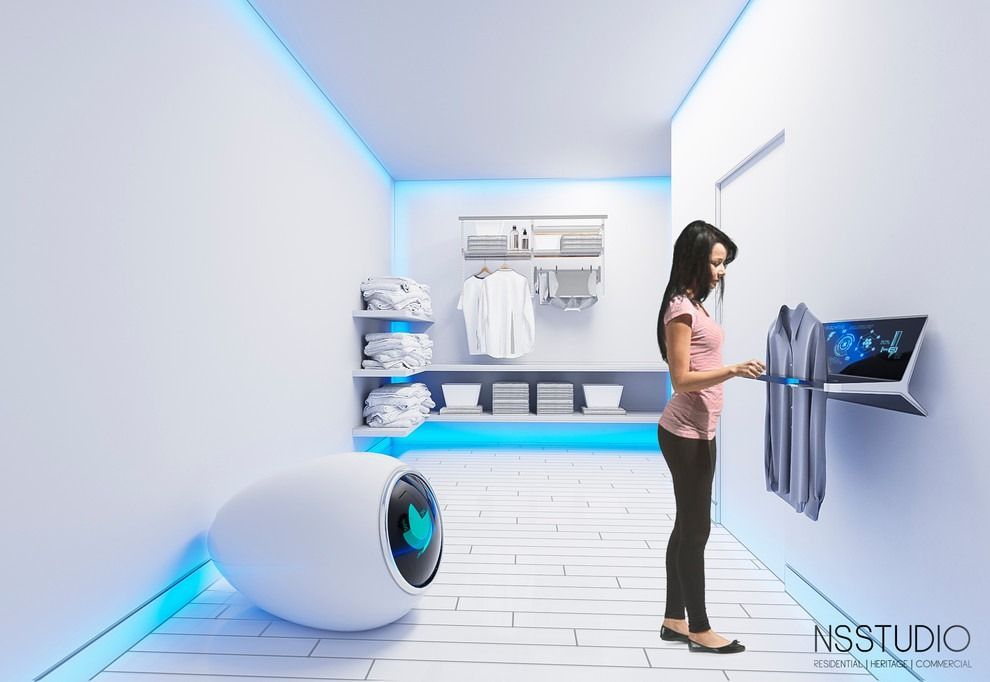
With the reduced washer/dryer sizes, do you really need such a large laundry? The concept for the dryer is quite innovative and original.
The laundry prophesises a downsized washing unit, and a machine that looks like a shredder which dries clothes as they are fed through it. Hardware in the bathroom is reduced to wall mounted basins and singular bath. The lack of shower implies increased leisure time allowed by technology. The juxtaposition of the ultra-modern aesthetic with the projected images of bush and forest surreally asks you to suspend reality and imagine yourself alone in those serene environs (a true Futurist would baulk at an attempted imitation of nature).
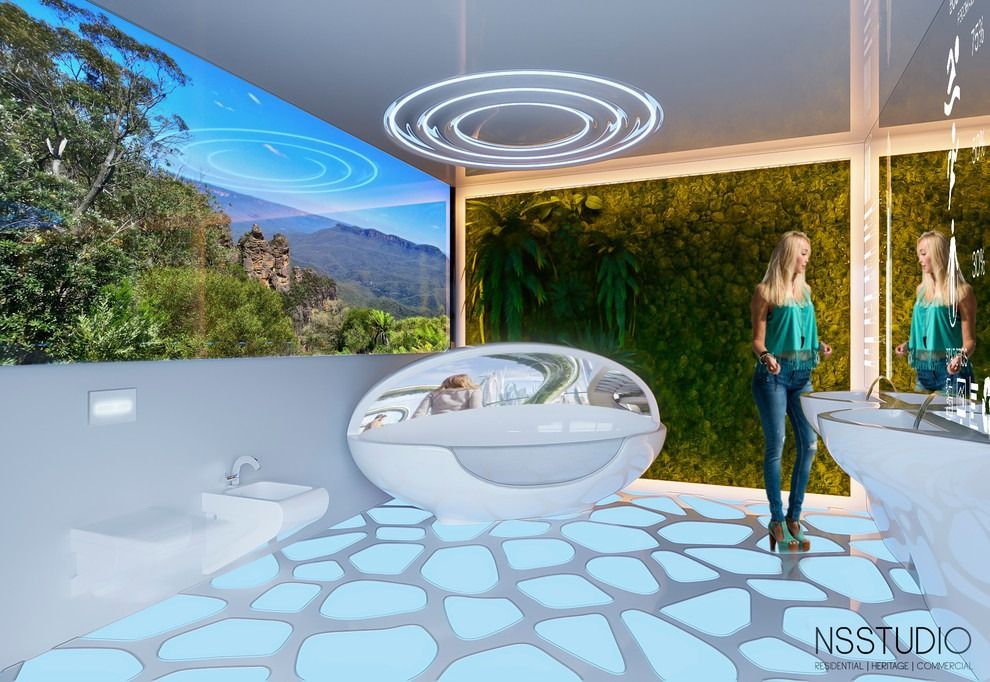
Since this is the future, I’ll assume the lack of towel rack means the bath also dries you.
The bedroom similarly projects images to provoke calm in the occupant, but unlike the bathroom, revels in its superfluity. A galactic tapestry adorns the ceiling, while clouds roll across the floor giving the impression of being suspended above the earth. The bedroom includes an advanced wardrobe and mirror system (let’s call it a smart wardrobe), that seems to have two main functions. The first is to make recommendations on clothing based on the weather, quite useful. The second is to show what your current outfit would look like in a different colour, unavailing at best.

The floating bed frame adds to the ethereal atmosphere of the bedroom.
Only four years have passed since NSSTUDIO Architects presented their House of the Future, but it can be said more confidently now that many of the forecasts they’ve made are very reasonably possible. However, there are some contradictions that break from Futurist theory. First of all, although car ownership is increasing, living space is decreasing. The concept of car ownership in urban spaces still clings to the outdated economic romanticism of “two cars in every garage”, made popular by a J Edgar Hoover political campaign. This design manages to cram two (electric, mind you) cars into the one dwelling. Secondly, many unnecessary stylistic choices increase the sterile atmosphere that is often associated with “futuristic” aesthetic. The biomorphic pattern that adorns the roof of the dining and living area, and the floor of the bathroom provides no extra function beyond lighting and only serves to contribute to the perceived aesthetic of a future house. Despite this, NSSTUDIO’s House of the Future has made a bold and increasingly accurate statement on dwellings of the future.
View NSSTUDIO Architect’s House of The Future and more innovative projects on Archify.




 Indonesia
Indonesia
 New Zealand
New Zealand
 Philippines
Philippines
 Hongkong
Hongkong
 Singapore
Singapore
 Malaysia
Malaysia


